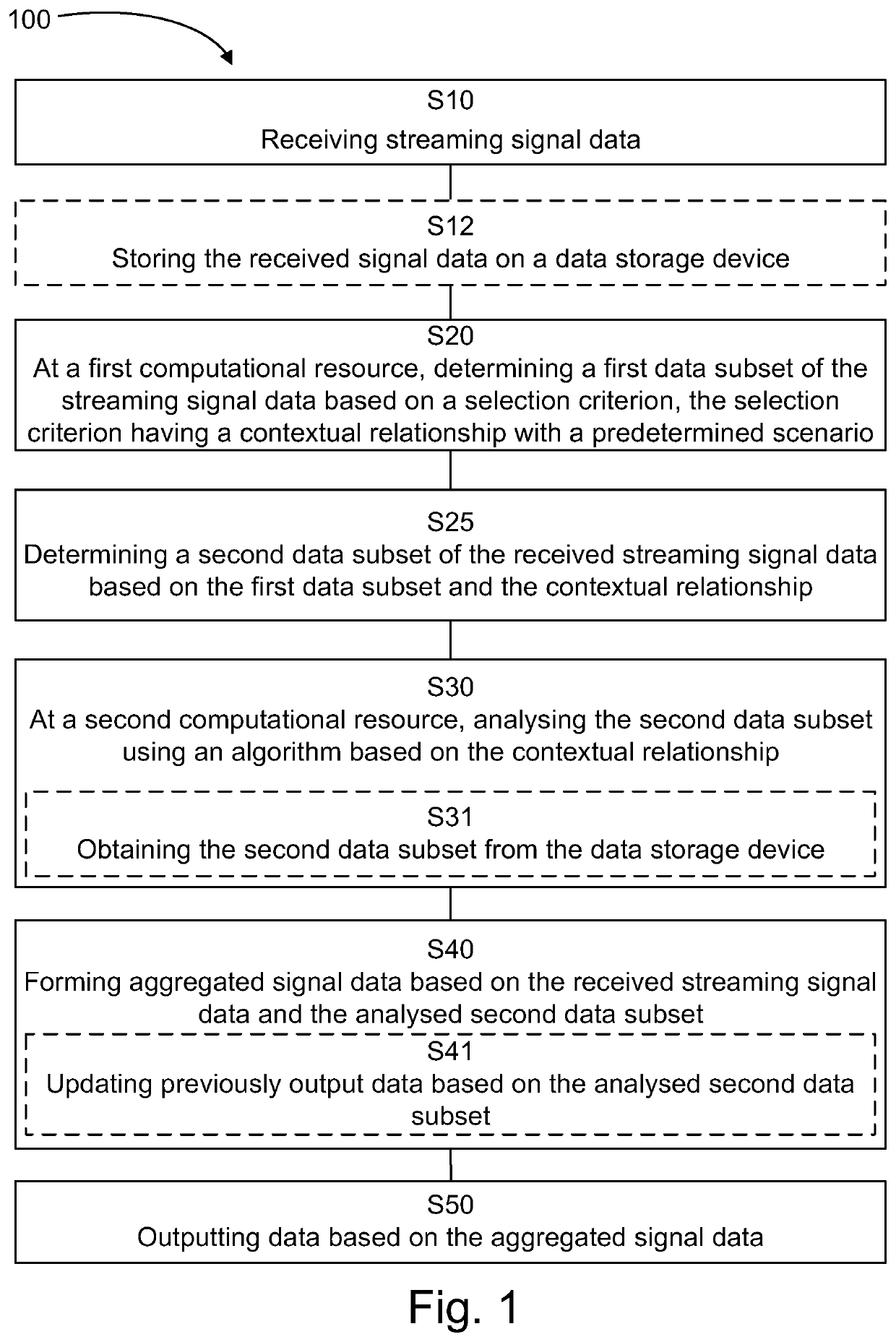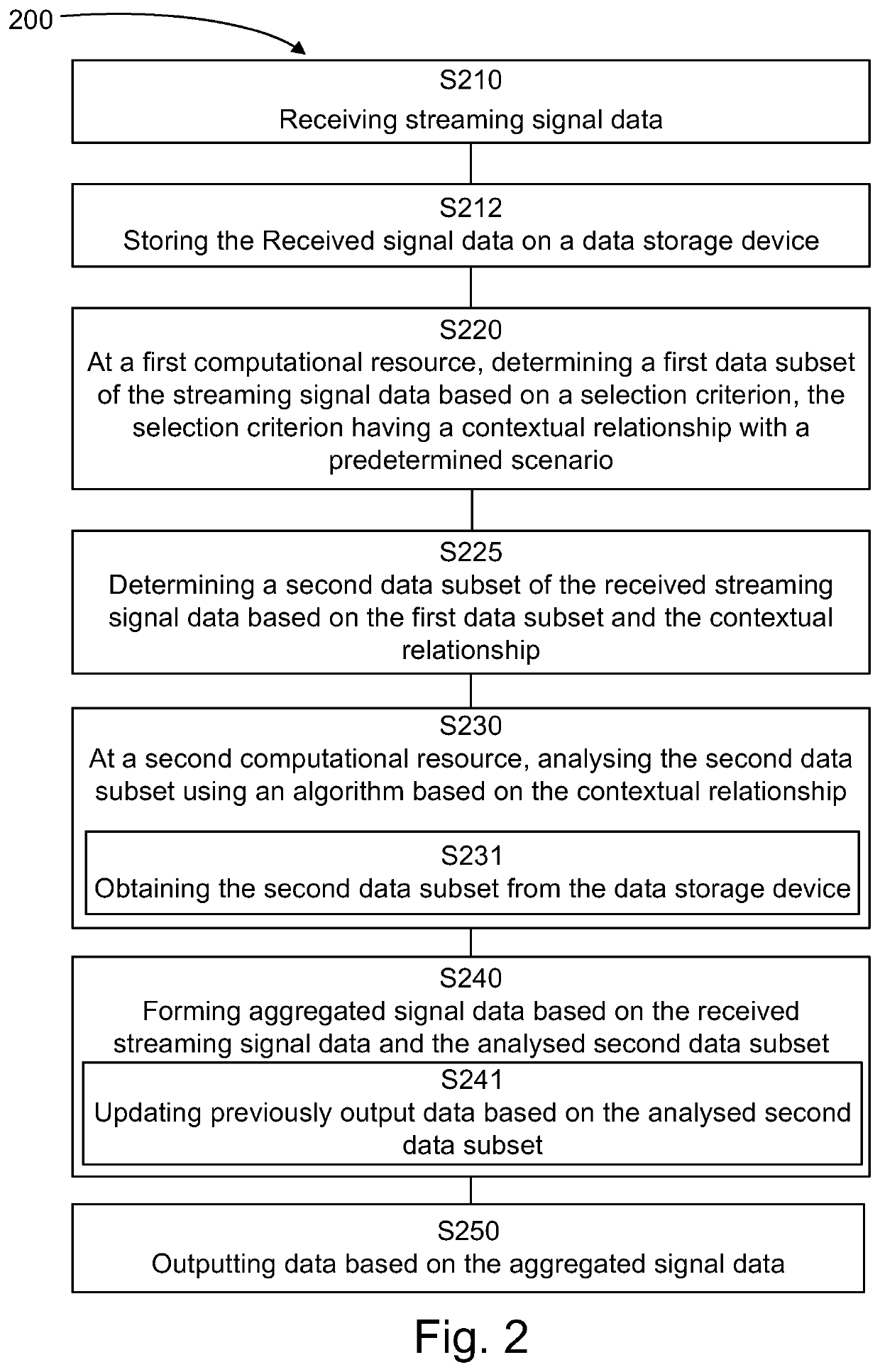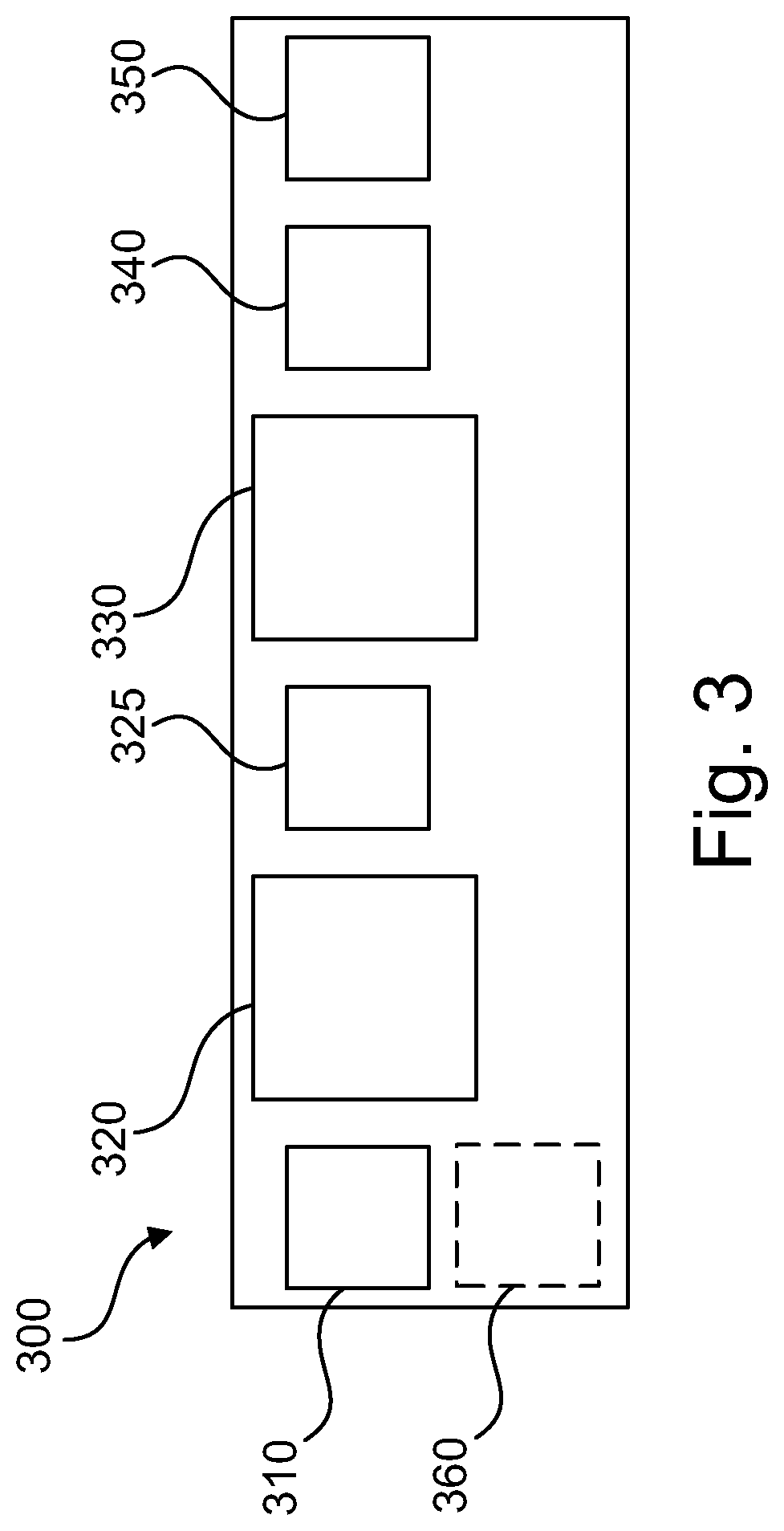Decision based re-processing framework for radar technology
a reprocessing framework and radar technology, applied in the field of signal processing, can solve the problems of reducing the amount of data needed to be transferred directly, limited computational resources available for analysis, etc., and achieve the effect of less computational resources, efficient and adaptable use of available computational resources, and effective scanning
- Summary
- Abstract
- Description
- Claims
- Application Information
AI Technical Summary
Benefits of technology
Problems solved by technology
Method used
Image
Examples
Embodiment Construction
[0017]FIG. 1 is a flow chart illustrating method steps of a method 100 for signal processing resource allocation, e.g. radar signal processing resource allocation. The method is based on the realisation that the available computational resources may be partitioned into a first computational resource dedicated to scan the streaming signal data, e.g. streaming radar signal data, using an algorithm suitable for high signal throughput processing, and a second computational resource dedicated to process a subset of interest identified by the first computational resource using an algorithm suitable for high performance signal processing. In other words, the first computational resource provides a preliminary result, which may trigger, possibly at some future point in time, a need for further analysis by the second computational resource. In addition to enabling the use of high performance algorithms to process relevant subsets of the signal data stream, the partitioning of the computation...
PUM
 Login to View More
Login to View More Abstract
Description
Claims
Application Information
 Login to View More
Login to View More - R&D
- Intellectual Property
- Life Sciences
- Materials
- Tech Scout
- Unparalleled Data Quality
- Higher Quality Content
- 60% Fewer Hallucinations
Browse by: Latest US Patents, China's latest patents, Technical Efficacy Thesaurus, Application Domain, Technology Topic, Popular Technical Reports.
© 2025 PatSnap. All rights reserved.Legal|Privacy policy|Modern Slavery Act Transparency Statement|Sitemap|About US| Contact US: help@patsnap.com



